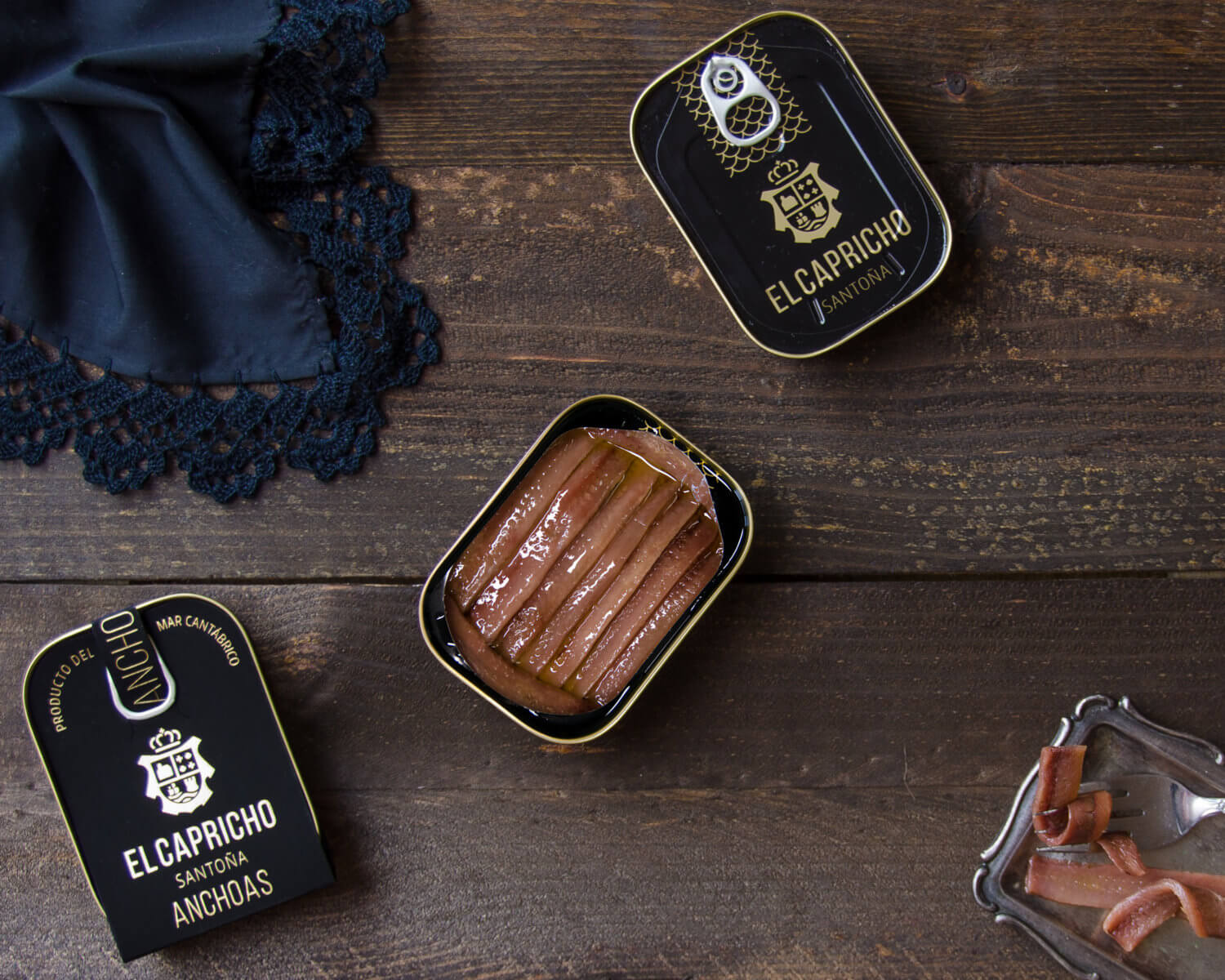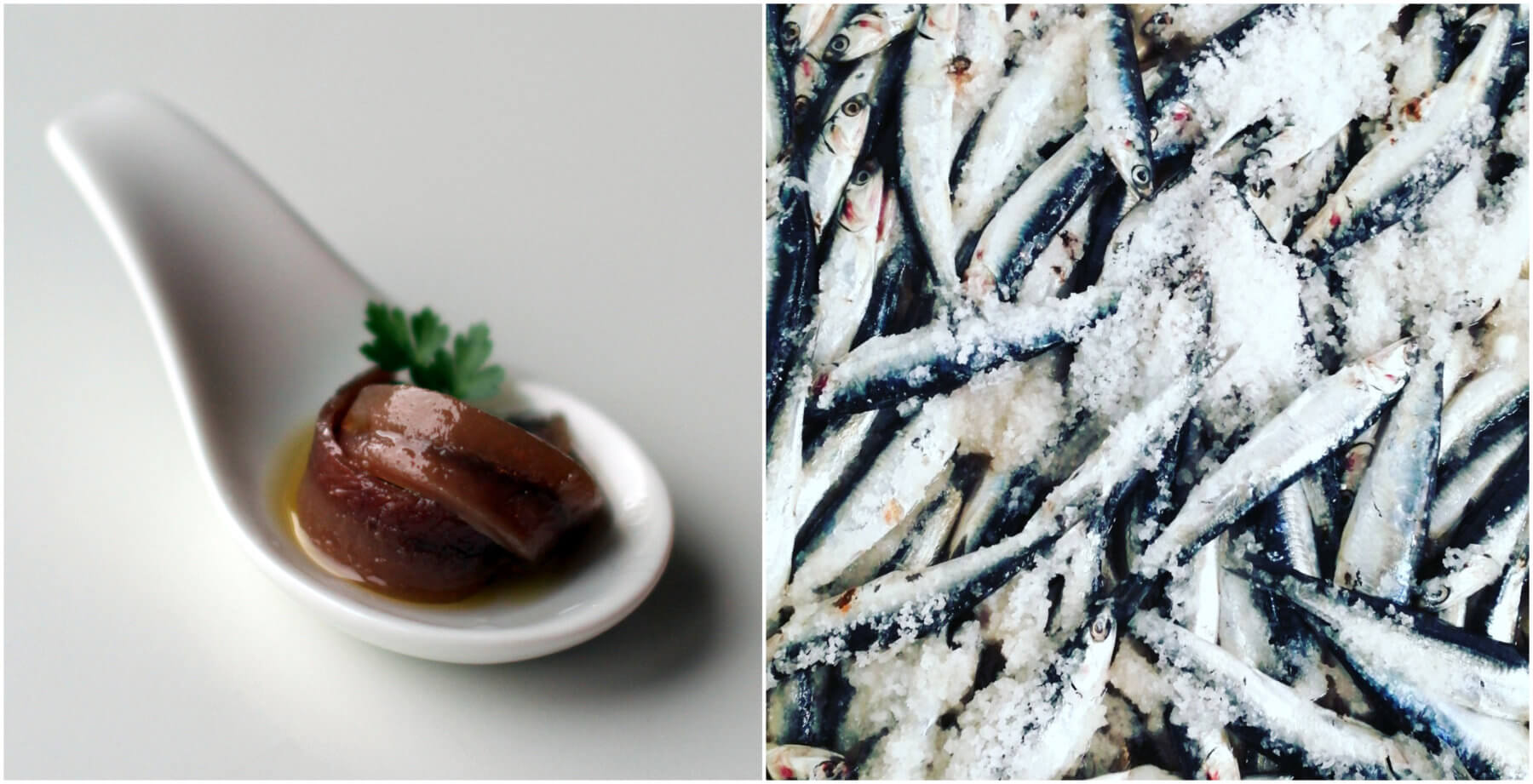A single word holds the key to the magic to so much of what we understand about the world of taste and flavour today – Umami. But what is this famous fifth taste, where do we find it, and why is it that we can’t get enough of it?
Salty and packed with umami – El Capricho anchovies
Salty and packed with umami, these tiny fish add an intense meatiness to a variety of dishes. To taste a truly exquisite anchovy though makes the supermarket equivalent pale into insignificance.
El Capricho produce just such anchovies in Santoña, Cantabria – a small town on the coast of northern Spain with a seafaring tradition. The company started 27 years ago as something of a passion project, with the aim of going back in time and recovering the almost forgotten wisdom – a tradition that had been buried by years of misunderstood progress. To rediscover what an exceptional anchovy must be, we speak with César and José Luis Iglesias, sons of “Chevi” Iglesias, who founded El Capricho 27 years ago.

Tell us about the history of anchovies as a delicacy?
Salty fish was typically an industry of the Italians. But at the beginning of 19 century there was a lack of fish in Italy, so the Italians came to the north of Spain, to the Cantabrian Sea, to look for fish. They found that we have the best fish in the Mediterranean Sea! So they established here in Santoña, catching fish, storing them, salting them and sending them back to Italy. But one of the men who was here fell in love with a woman from Santona. They got married and started the first factories here in Santoña. This man invented the idea of having anchovy fillets already cleaned and preserved in tins with butter, and later with olive oil.
We let nature set the pace of maturation of anchovies. We know that it is impossible to be wrong in this way.
What about El Capricho?
The founders of El Capricho lived in Santoña, but they had nothing at all to do with anchovies. This industry had been established in our region for a long time, and a lot of industrial anchovy factories started to open up. In the early 1990s artisanal work was taking a real hit. The demand for anchovies was high, factories were trying to do it very fast and forgetting the quality, so it started to go downhill drastically. The founders of what was to become El Capricho were out for dinner one night and thinking that it’s not possible that Santona, the capital of anchovies, had such poor quality anchovies at this moment. So they decided right then that they wanted to start producing the best anchovies in the world. Chevi’s friends were laughing at him, but he didn’t care. He started the factory, hired the best women, and little by little they built the company.
What makes your anchovies so good?
Firstly the raw material, the anchovies themselves, and secondly you taking a lot of care when you receive fresh fish. We only buy anchovies from inshore vessels that use purse seine fishing, which reduces bycatch to a minimum. At the beginning you have to clean them a little, then put them in salt. Then you have to consider the maturation time. A lot of companies keep anchovies in salt for between 4 and 8 months. During this time the fat and the water from the anchovies start to go out, but it’s not really enough time, we keep in salt for a year to a year and a half. Because of this long maturation, all the fat and water from the fish are removed and it becomes much more intense.

We also lengthen the squeezing process, to remove as much salt as possible. Also, you have to clean the fish manually if you want to do it well and remove all unnecessary parts. In some other factories, they do it very quickly and poorly. Sometimes when you eat the anchovies you get bones, so it’s not very well done. But our women do it with a lot of care, bone by bone. They take a lot of time, but at the end we have very high quality anchovies.
Also, we let nature set the pace of maturation. We know that it is impossible to be wrong in this way. This is how we achieve that our final product acquires the characteristic color, the intense smell, the firm texture and the exclusive flavor that our grandparents knew.
Some people think that size matters, that bigger is better, but we don’t think size is important at all – the most important is the quality and how it’s prepared.
What are the different classifications?
There are different sizes of anchovies, but in general it depends on the fish each year. For instance last year the anchovies weren’t so big. Some people think that size matters, that bigger is better, but we don’t think size is important at all – the most important is the quality and how it’s prepared. We do the same preparation process for bigger and smaller anchovies. In fact, we prefer smaller anchovies which you can eat in one bite. Some restaurants serve only big anchovies, because they look better, but all our anchovies have the same quality.

